Opinion
As Corruption Reigns in the Art Market, Kenny Schachter Follows the Money in New York’s Art Auctions
Our columnist went in search of funny business in New York's marquee fall auction week, and he didn't have to look far.
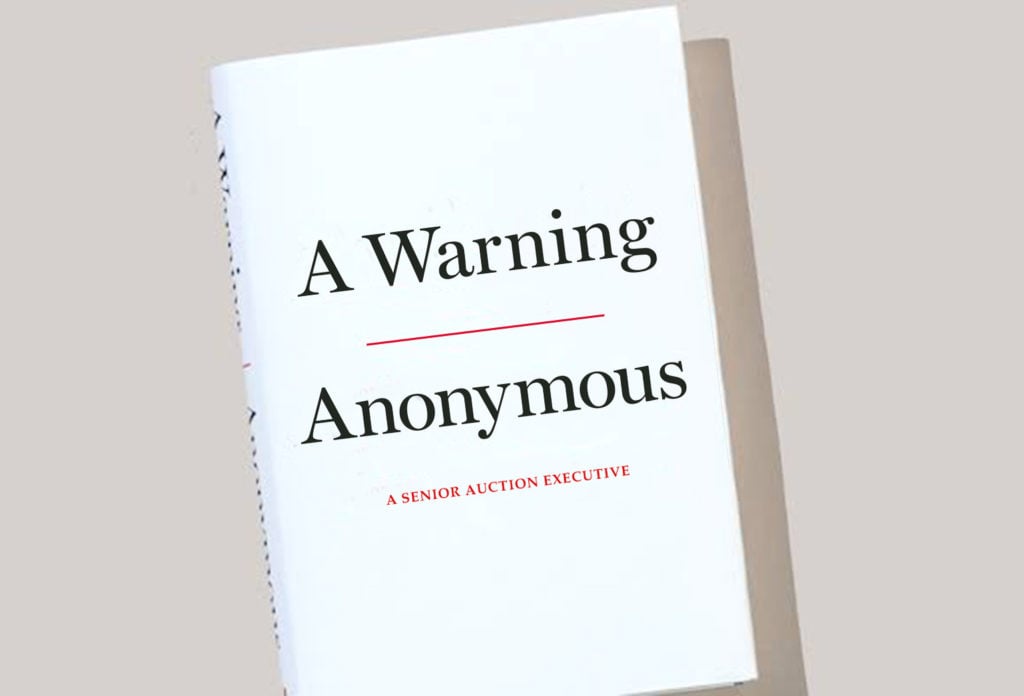
Our columnist went in search of funny business in New York's marquee fall auction week, and he didn't have to look far.

On November 8th I gave a keynote talk for the Art Appraisers Association of America at Cardozo School of Law, which I coincidentally attended in a previous life. Initially, I was going to speak on the state of copyright law in art—or rather the lack of it after the advent of Richard Prince (now it’s more about how to copy right)—until a series of events led me to change course. Namely, what appears to be a crescendo of corruption in the art market. (On a side note, the organizers at the appraisers’ association had so much faith in my dependability that they organized a backup by way of a cast member from “Antiques Roadshow” should I be a no-show. Granted, the talk was scheduled for 9 a.m.—Nam June Paik said he became an artist to sleep late—but, still, I’ve yet to miss a deadline, thank you very much.)
Prior to my talk, I was informed that the audience was comprised of art lenders, lawyers, and appraisers. Oops. Last week I watched a documentary on the financial crisis and the inherent fragility of the world’s financial markets, which by comparison makes the art world seem more like an obstreperous children’s party. My main point of concern is that, for a trade approximating $70 billion a year, there is (stunningly) zero proof of title that definitively establishes ownership for artworks. There are Uniform Commercial Code filings evincing loans on individual works, and there’s the Art Loss Register for when things go awry, but otherwise there’s no real corroboration for who is the rightful owner of a piece of art. Other than an invoice, that is, which is about as secure as your emails—and if you haven’t been hacked yet, you will.
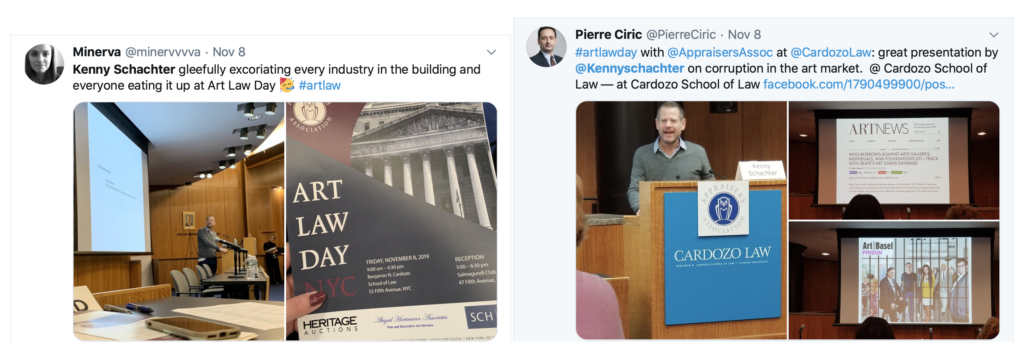
Oops, I wish I could help myself… I can’t. Screengrab by Kenny Schachter.
There are virtually no contracts for transactions ranging from $500 into the tens of millions. Moreover, pretty much the only document you are ever required to sign regarding the purchase of art from galleries—the non-resale/right-of-first-refusal agreement—is in fact unenforceable. (I snuck in some research when I was at my old law school.) When I asked a prominent billionaire collector/dealer—they all are nowadays—if there are any measures you can take to be assured of having title to an artwork, he replied: “You deal with people you know who are correct.” Easier said than done—and a hell of a foundation for a multibillion-dollar business sector. For example, years ago I sold a significant Cézanne canvas via Blain Southern (who are experiencing problems of their own these days) by dint of a single-page invoice with no signatures, no lawyers, and no issues. It remains an unexampled, standalone experience in my career.
A company called ARIS offers art-title insurance—yet, from what I can see, there is an exclusion for “Affirmative Misrepresentation” (aka someone deliberately lying to you) that just about rules out the purpose of attaining such coverage in the first place. They must have googled me because to date I’ve received no response to multiple messages I left seeking to understand the scope of services and prices on offer. There are “smart contracts” utilizing blockchain, and a company called Artory is attempting to get collectors to register their holdings through the technology, but they probably won’t be in business long enough for the scheme, or any like it, to take hold. We’ll have to leave that for our kids to figure out, since they’re the only ones who might understand (and trust) the concept.
An area for concern (to put it mildly) that has all the hallmarks of the subprime debacle is the surfeit of fine-art financing—and the Appraisers Association audience was none too amused by this aspect of my presentation—which gives auction houses a whole new font of forced consignments when borrowers default (or worse). The Economist described the phenomenon in an article from earlier this year entitled: “Cash in on your Picasso — Borrowing against art is growing at a stunning rate.”
The floodgates have been opened: when I googled fine-art lending there were 258,000,000 results. There’s said to be a trillion dollars of art in circulation, which has traditionally been viewed as a stagnant, non-income-producing asset. (Oh, and also something to look at—an attribute that’s lost on most of today’s market players.) No longer: whereas art used to generate no cash until sold, now you can finance off it, keep it hanging or in storage, and have more money to buy more art or a Hamptons spread—thereby fueling increased inflation and speculation. The first sponsored entry, from Thomas Gonzales, offers: “Flexible terms, interest rates from 6.5%. Straightforward contracts. Competetive [sic] bank rates. Real non-recourse lending. No loan-to-own. Highlights: In Service Since 2009, No Bank Checks And Inquiries.” No loan-to-own? Whatever that is as pertains to art I’ve no clue. No bank checks or inquiries? That’s my kind of borrowing criteria.
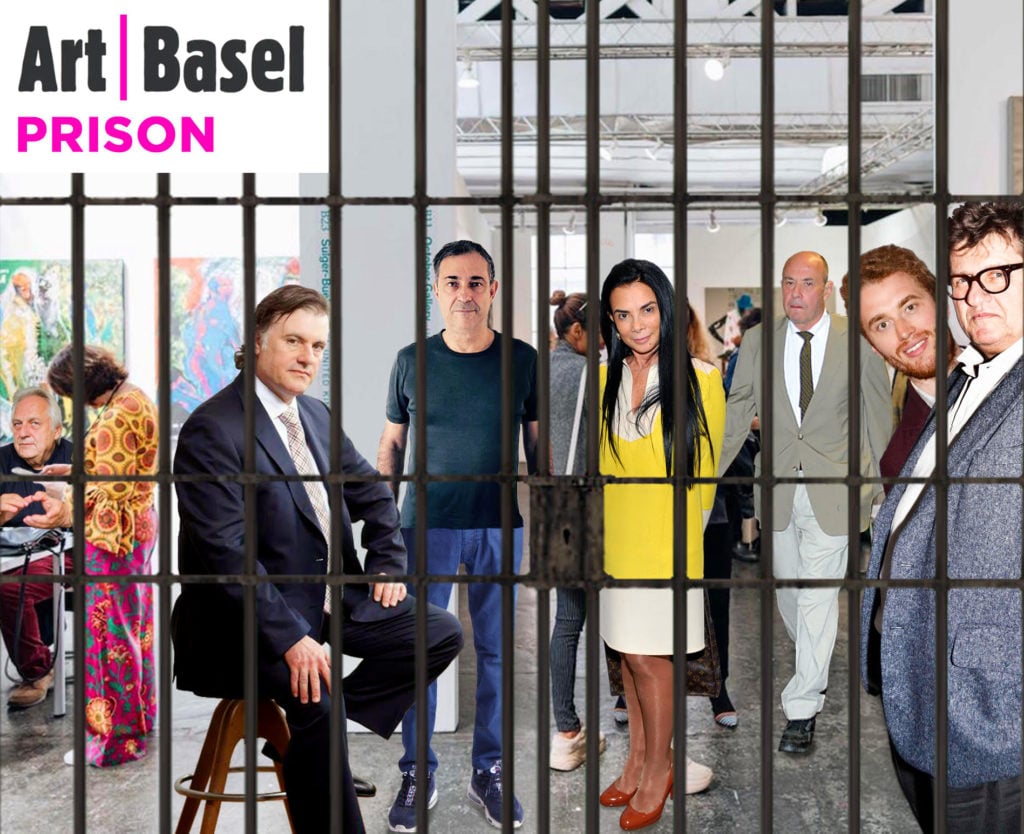
There’s probably not going to be an Art Basel Hong Kong this year, but you can always pop over Art Basel Federal Prison. Artwork by Kenny Schachter.
The problem is that many boutique art-finance firms have no knowledge of art, let alone the art market, and some fail to a ridiculous extent. Like the company that loaned against a painting said (by the borrower) to be guaranteed at auction for $9 million (on an estimate of $5 million to $7 million) even though it happened to have no guarantee symbol in the catalogue or IRL (in real life). Then there was the now-fugitive Malaysian financier Jho Low, who borrowed from Sotheby’s to buy from Christie’s (so much for anti-money laundering compliance). There’s even a company selling peer-to-peer fractional ownership of loans (cue eye-roll). The fund seems to have already lost all its money—surprise! Lest I forget, there’s also the white-shoe law firm Herrick that advises on art lending and states on its website: “Would More Regulation Spoil ALL The Fun?” It would for them. (And dent their fat fees.)
I don’t read fiction because there’s so much of it swirling around the art market, posing as fact. The Christie’s catalogue for the sale of Leonardo da Vinci’s Salvator Mundi (a painting you might have heard of), featured an entry citing an attribution by the Metropolitan Museum of Art curator Carmen Bambach, which she subsequently denied making. Sigmar Polke’s “Propellerfrau” (which was not his title, but was listed in the catalogue as such nonetheless) just sold in the evening sale of the same house last week at the low estimate. Conveniently, Christie’s failed to mention that the Polke was the subject of multiple litigations, claimed by the artist to have been stolen, trimmed, re-stretched, and even signed (replete with spelling error!) without Polke’s knowledge or consent. The online catalogue came with a disclaimer by the former artistic director of the estate—after they noted his approval of the sale in the hard copy. Even odder (and this you couldn’t make up): the painting was depicted as part of the treasury of what looks like a bizarre religious/investment sect of Swiss Templars—I’m not sure if they were the sellers.
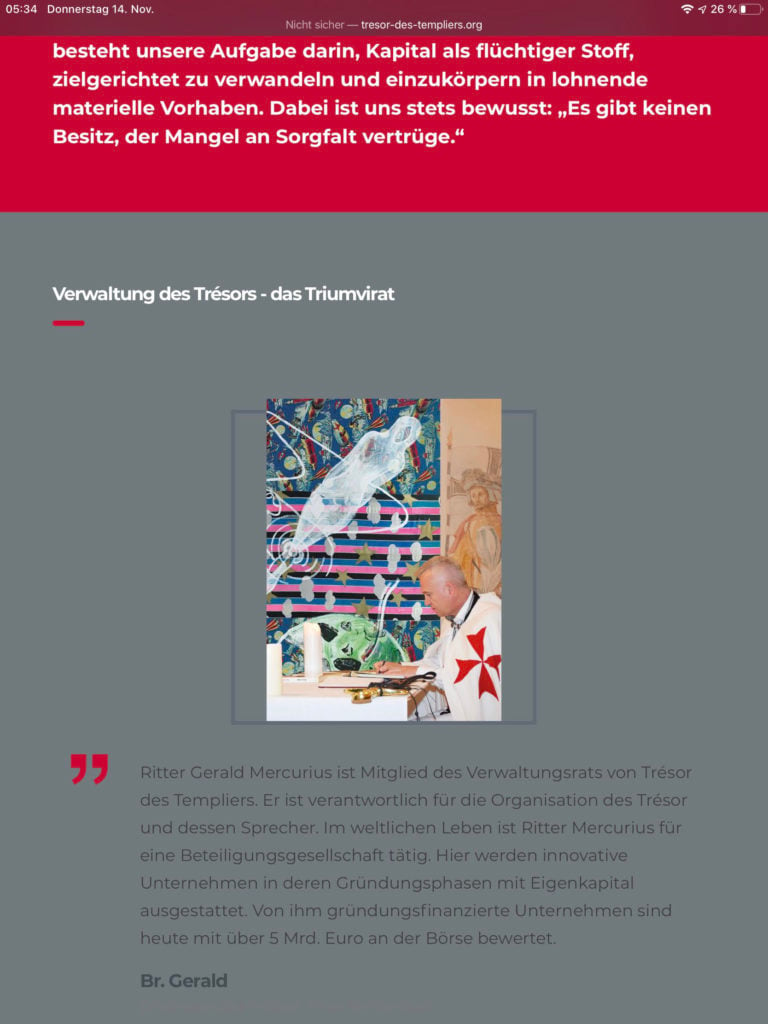
May God—and the art market—watch over you. What is this weird cult? iPhone screengrab by Kenny Schachter.
Christie’s also listed a large Christopher Wool painting as emanating from a private collection, when in fact it was only recently sold by a major Madison Avenue gallery very active in the secondary market. Don’t get me wrong—they are not the only auction house behaving badly, and I am not picking on them for refusing me tickets to the sale last week. But in this instance the selling gallery got in trouble with their client for stating that they had owned the work for years, instead of disclosing that it came from a dealer who recently made himself scarce for his misdeeds, and who may well be hiding out in a freeport near you.
Earlier this month, Eileen Kinsella—and I am nothing short of a fan—reported on the end of the golden age of guarantees. However, while there was a decline of about a third this cycle (in lockstep with overall auction performance), guarantees aren’t going anywhere, and will return with full force and effect in the spring when the Macklowe collection comes to market. Not to mention, Phillips increased guarantees by more than 70 percent than last year; a volume of Phillips’s house-owned guaranteed art to date would rival the thickest phone book. Many of the guarantors were third-party, indicating a robust appetite for gamblers—I mean participants—to own the art they speculated on. You can disregard wrongheaded comments like those of art advisor Todd Levin in the above-referenced article that guarantees “work like steroids do for bodybuilders, in that they artificially enlarge markets.” He seems to entirely miss the point: guarantees reflect unbridled confidence in the notion of buying and possessing expensive art. Until the next sale.
Sotheby’s Clyfford Still was guaranteed by Pierre Chen, a canny Taiwanese investor based in Hong Kong, who repeatedly rolls the dice without so much as looking at the art—JPEGs, as I have written before, suffice for the fearless art spec-u-lector. And it’s usually from Sotheby’s, where his daughter Jasmine worked until taking a sabbatical to qualify for Taiwan’s equestrian team for the 2020 Tokyo Olympics—although she can still be spotted around Sotheby’s offices as an unpaid volunteer. (Who says it’s hard to find good help these days?) I doubt she’ll face the sharp edge of the axe of renowned “cost-killer” Patrick Drahi, Sotheby’s new owner. Jasmine describes her tactics astride her horse as “strict but fair,” a policy that can come in handy when she returns to Sotheby’s—she may want to hang onto her crop in addition to her paddle.
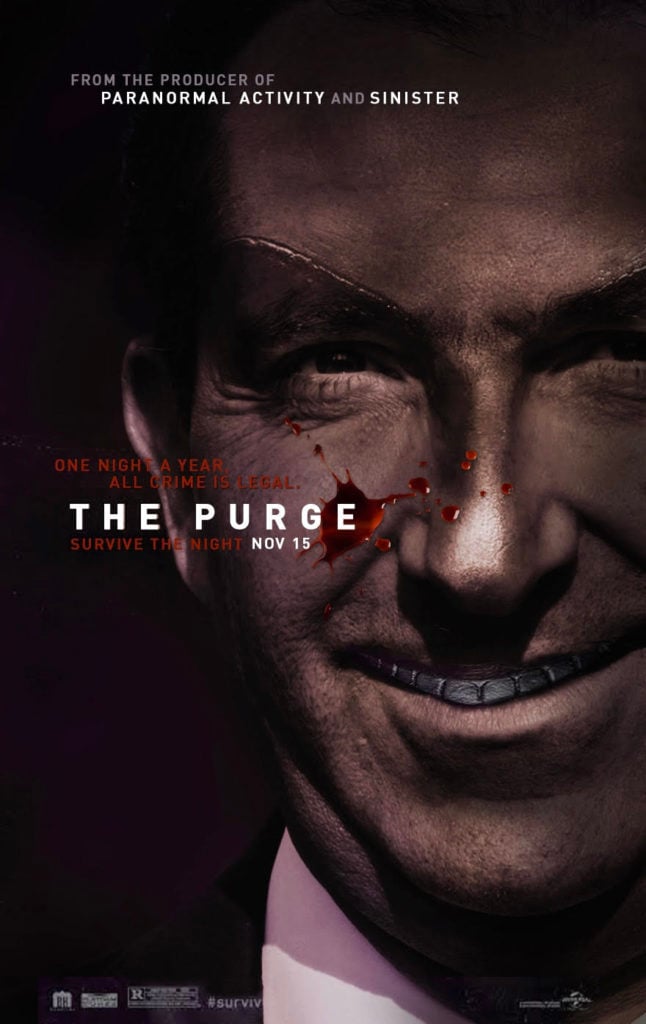
Did someone say purge? You can run, but there’s no escaping the axe of Sotheby’s new owner, renowned cost-cutter Patrick Drahi. Photo illustration by Kenny Schachter.
Off-the-radar but proactive Belgian collector Laurent Asscher guaranteed Sotheby’s Christopher Wool 1995 spray painting on aluminum that exceeded expectations (the low estimate was $6 million) to sell for $10.4 million, indicating signs of life in the recently downbeat Wool market. The work was sold by collector Thea Westreich, author of the book Collecting Art for Love, Money and More (which might stand for more guarantees). Despite rumors, Dan Loeb wasn’t the buyer of Ed Ruscha’s Hurting the Word Radio #2 at Christie’s, said to have been guaranteed for a whopping $34 million (I was offered it for $40 million last December), stating in reply to my query: “I’ve been a bridesmaid but never a bride for all the iconic ’60s pieces that have come up at auction.” Does anyone out there have an rollicking Ruscha I can offer him? Not to sound (too) disingenuous after this diatribe, I still (kind of) love the art world and fundamentally believe in the solidity of the market.
With headlines like Bloomberg’s “NYC Art Auction Sales Poised to Tumble Amid Market Uncertainty” before the sales followed a matter of days later, in whipsaw fashion, by “Hippo Bathtub [by François-Xavier Lalanne] Fetches $4.3 Million Reaps Whopping 2,500% Return,” the art market is actually a lot more upbeat than… today’s art press. Surely a sign of a bull run (or something more disturbing), Invader, another one-named masked street-art crusader, killed it at Sotheby’s last week when he more than tripled his previous auction record by fetching $1.22 million on an estimate of $100,000 to $150,000. I should grab a ladder and chisel to snatch the example affixed to a brownstone a block away from my New York home—which would be sort of like the Keith Haring that Bonhams sold last week for $3.9 million, which had been wrenched from the walls of Grace House, a Catholic youth center, and sold by the church.
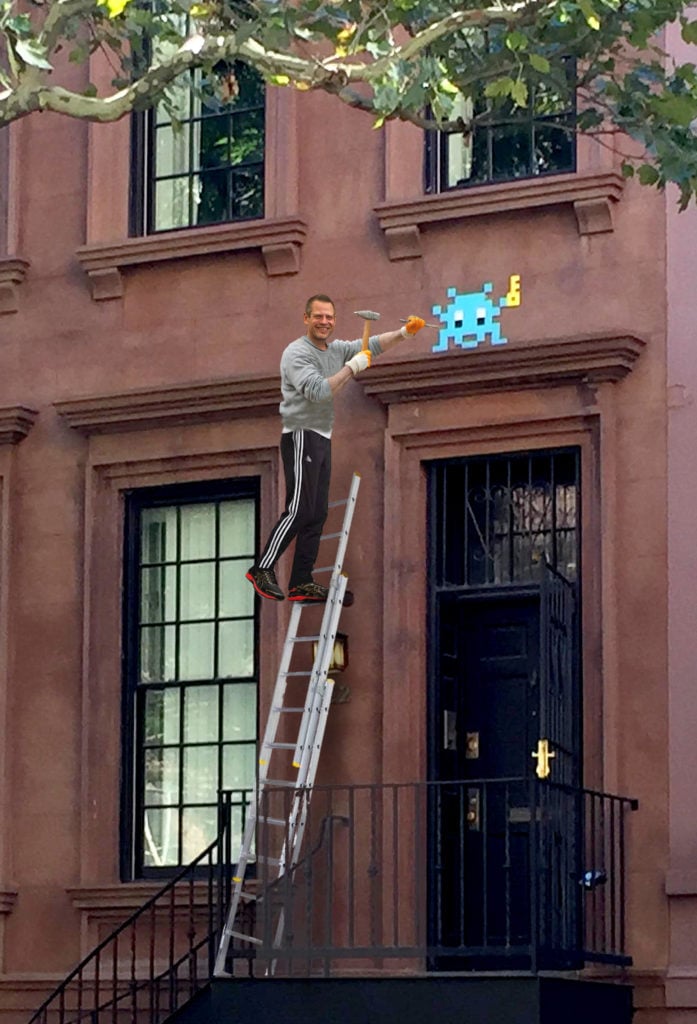
Sotheby’s, here I come. Photo illustration by Kenny Schachter.
Hong Kong update: last week one gallery reported a lone visitor (a curator) at its opening, while the dealership’s staff couldn’t get out of the building afterwards due to police barricades. All of eight people turned up for Gagosian’s Albert Oehlen opening, and I heard another blue-chip gallery stopped paying rent on their Hong Kong space altogether. Marc Spiegler, head of the Basels, assured me that “the fair is more than four months away, and obviously we’re watching the situation extremely closely and will react to the situation as it develops.” My bet is Art Basel Hong Kong will be cancelled and payments refunded, forcing the parent company MCH Group into further financial turmoil.
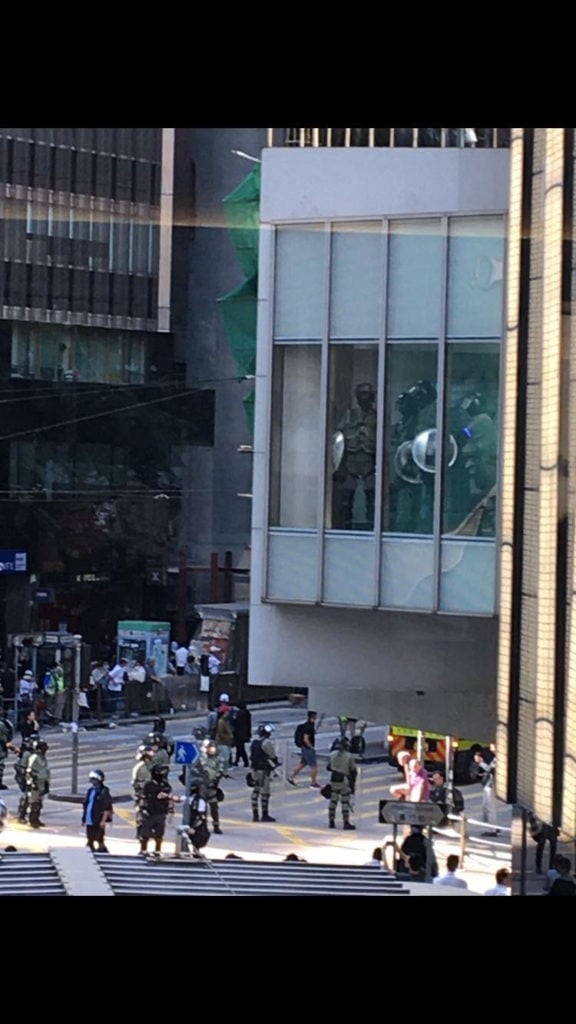
Break out the riot gear—the gallery-filled Pedder Building in Hong Kong last week. Street blockades made it all but impossible to navigate. Photo courtesy of Monita Wong.
In the Middle East, the world’s most profitable company, Saudi Aramco (twice the value of Apple), is about to go public with a valuation of between one to two trillion dollars, substantially boosting the income of what is already the world’s richest family. The kingdom is art-advised by Sotheby’s Allan Schwartzman—an additional escapee of company cutbacks. They could swallow the entire art market whole without so much as a hiccup. A company partially owned by the Saudi government also invested $200 million into Penske Media Corporation, the company that has been gobbling publications from Variety, Woman’s Wear Daily, Rolling Stone, to ARTnews, Art in America, ANTIQUES, MODERN Magazine, and the Robb Report, which has lately become more arty—see my interview there from this May. They also absorbed the website Art Market Monitor and are on the verge of buying a certain newsletter that closely covers auction buyers and underbidders for a hefty sum in the low seven figures.
If I didn’t blow my shot already by mention of the above… if you can’t beat ’em. I mean, I wasn’t even invited to Artnet’s 30th birthday celebration dinner (sponsored by Hennessy), though the honored guest, Anish Kapoor, mentioned that I was one of his favorite aspects of the site during his speech. Yes, my morale has been bruised, but I am still uplifted every day by looking closely at art despite selling a portion of my collection at a single-owner Sotheby’s online sale and London exhibition titled “The Hoarder,” December 11th to 18th (for your one-stop holiday shopping convenience). Unlike Marc Jacobs, who sold his entire collection at Sotheby’s—or tried to, anyway—I’ve still got three warehouses and a new Manhattan residence (already) filled to the brim.